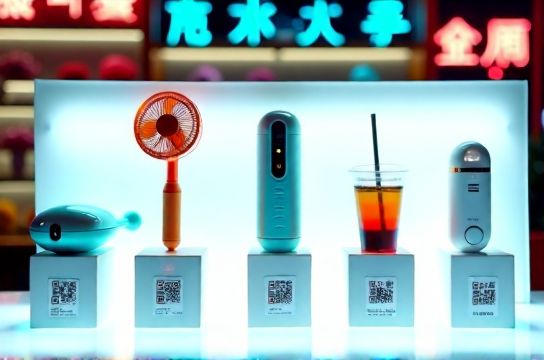Unbelievably Strange Chinese Products That Found a Global Audience
- 时间:
- 浏览:54
- 来源:OrientDeck
If you've ever scrolled through TikTok or wandered into a quirky gift shop, chances are you've stumbled upon some weird but wildly popular Chinese products. From garlic peelers that look like alien relics to USB-powered mini fans that double as necklaces, China has mastered the art of turning the bizarre into bestsellers.

But how do these strange inventions go from obscure factory shelves to global sensations? Let’s dive into the world of oddly satisfying, surprisingly useful, and downright weird Chinese gadgets that somehow won over millions.
The Rise of the Oddly Useful
China produces over 70% of the world’s consumer electronics, but it's not just smartphones and laptops. The real magic happens in the corners of Alibaba listings—where $2 gadgets with names like “Automatic Shoe Polishing Robot” (spoiler: it’s a brush on a stick) go viral.
Take the 3-in-1 Vegetable Chopper—a plastic box with blades that turns cucumbers into confetti in seconds. It sells for under $5 and has racked up over 2 million units sold globally via cross-border e-commerce platforms.
Data Doesn’t Lie: The Viral Gadget Breakdown
Here’s a snapshot of five bizarre Chinese products that became international hits:
| Product | Price (USD) | Global Sales (Est.) | Viral Platform |
|---|---|---|---|
| Silicone Garlic Peeler Tube | 1.99 | 15 million+ | TikTok |
| USB Neck Fan | 8.50 | 8 million+ | Amazon + Instagram |
| Mini Fake Succulents in Keychains | 2.30 | 5 million+ | Etsy + Pinterest |
| Automatic Bubble Tea Straw Cleaner | 3.99 | 2 million+ | YouTube Shorts |
| Finger Toothbrush (Silicone Sleeve) | 1.20 | 10 million+ | TikTok + Facebook |
Why Do These Sell So Well?
It’s not just about low prices—though that helps. These products tap into something deeper: instant gratification. They solve tiny daily annoyances in ways that feel fun, novel, and oddly therapeutic.
The garlic peeler? You toss cloves in, shake it, and poof—peeled garlic. No sticky fingers. The finger toothbrush? Perfect for post-coffee touch-ups at work. And let’s be real: half the appeal is showing it off online.
Manufacturing Magic Meets Social Media
Yiwu, a small city in Zhejiang province, is known as the “World’s Supermarket.” It supplies 60% of the globe’s small commodities. When a product trends on TikTok, factories there can pivot production in days, flooding the market before competitors even notice.
This agility, combined with platforms like Temu and Shein driving ultra-fast logistics, means a viral video today can lead to doorstep delivery in Europe or the U.S. within a week.
Are They Worth It?
Not all winners are built to last. Many of these items are made with thin plastics and minimal quality control. But here’s the twist: they’re not meant to. They’re disposable innovation—cheap enough to try, fun enough to share, and useful enough to keep.
In a world where we crave both convenience and content, these oddball products hit a sweet spot. They’re not just tools—they’re conversation starters, meme material, and proof that sometimes, the simplest ideas are the strangest—and the most successful.